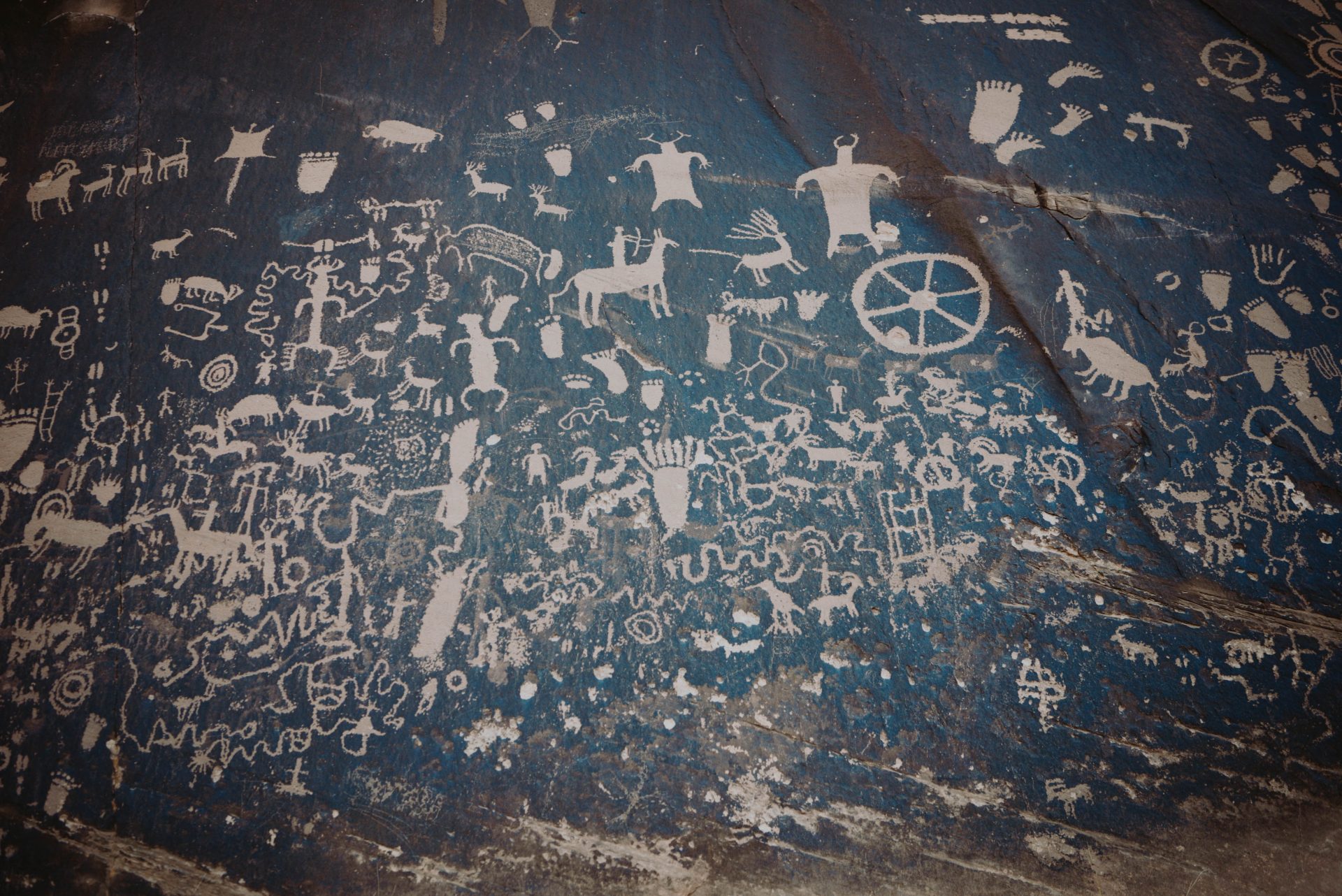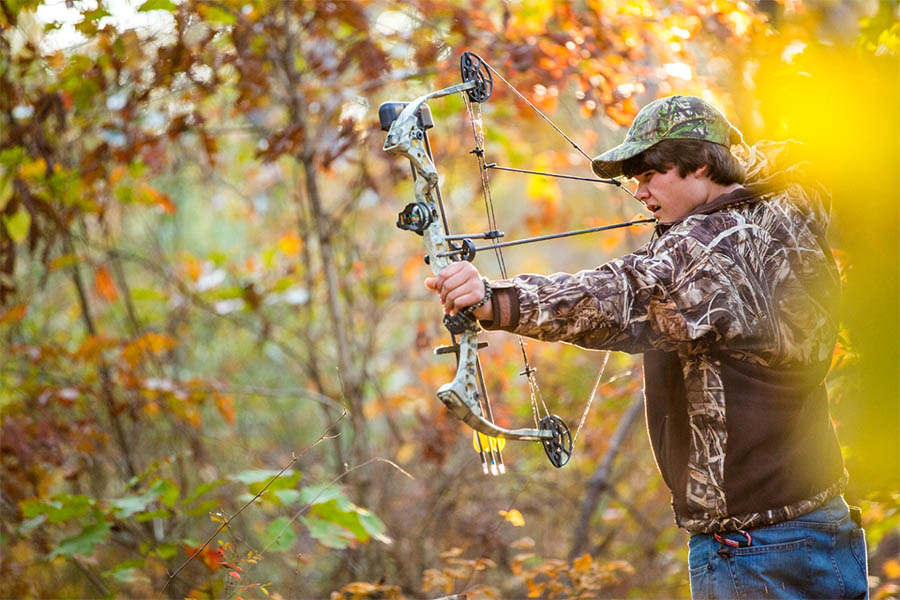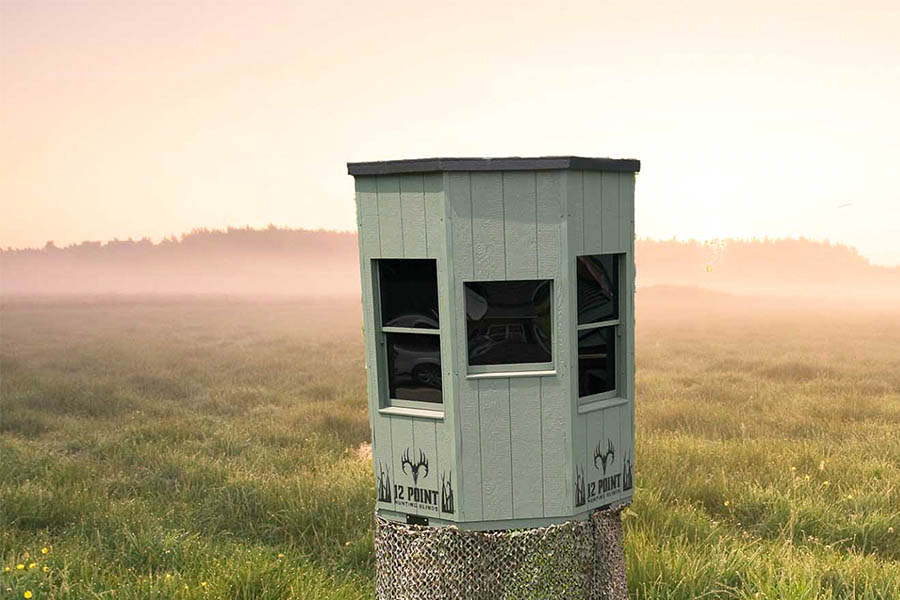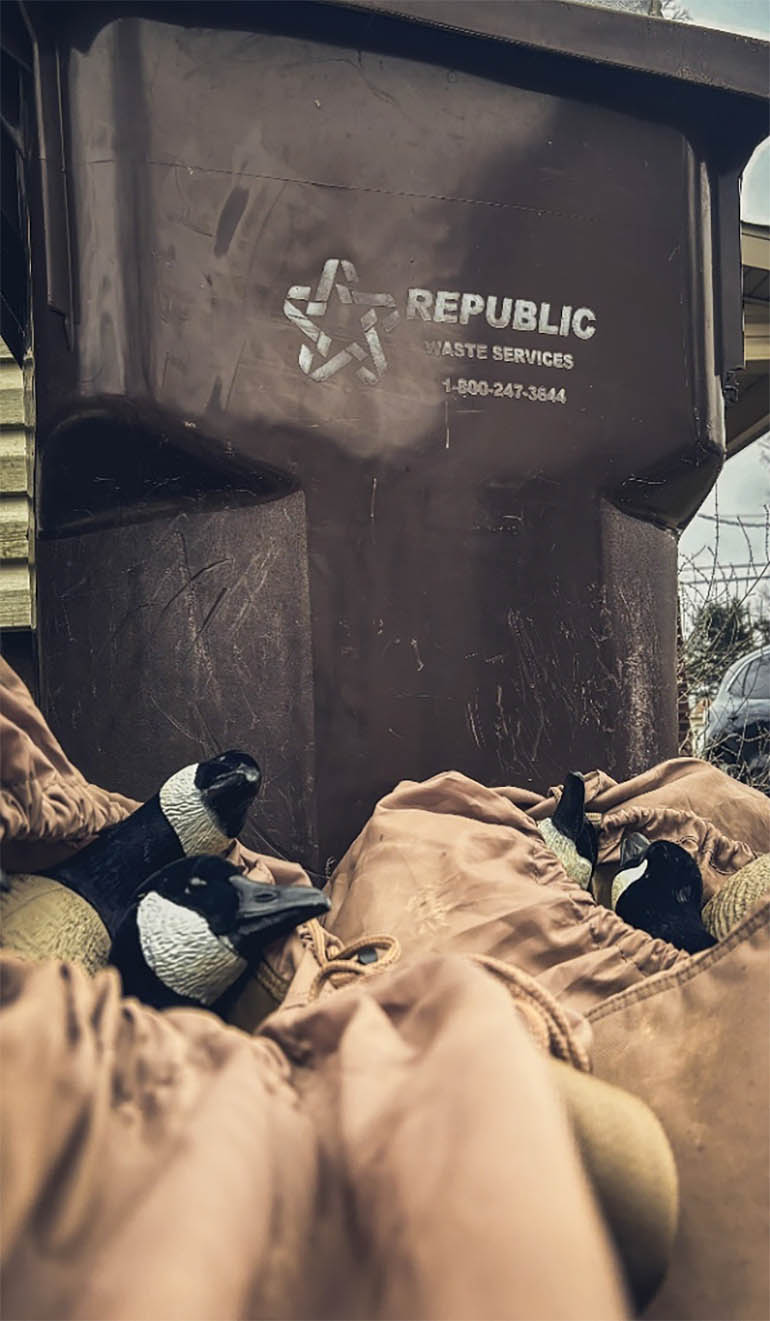The History of the Hunting Blind
Many hunters feel quite a bit of separation from our hunter-gatherer ancestors. These days, we have highly accurate firearms, eagle-eyed optics, GPSs, four-wheelers, and so on and so forth. The hustle and bustle of modern society and our advanced technology can leave a hunter feeling wholly different from the first men and women to hunt this Earth. Yet, many hunters yearn for that connection to the past, and there are still practices, ideologies, and technologies that are quite like historical hunting. One of those technologies is the hunting blind. Now, what is a hunting blind?

What Are Hunting Blinds?
A hunting blind is a type of structure that conceals a hunter, allowing them to get a closer shot at the game animals they pursue. They range from bushels of grass and sticks to intricate buildings with comfortable seating. As far as we know, hunting blinds are nearly as old as hunting itself. They are a common find in archaeological excavations and appear frequently in historical writings. A type of prehistoric blind that has been discovered in many instances is simply referred to as a rock blind. You can probably guess how it works. Interestingly though, these prehistoric rock blinds tend to have uniformity. In his essay on this topic, Kevin D. Dalton writes, “Generally, stone hunting blinds features are u-shaped, one to one and one-half meters in diameter, and are constructed of two to three rock courses high.” With this, we can infer that rock blinds weren’t an improvisation, but instead, a formulaic construction passed down from generation to generation, that spread across continents.

Photo credits: John O’Shea, Museum of Anthropological Anthropology, University of Michigan

Photo credits: John O’Shea, Museum of Anthropological Anthropology, University of Michigan
Early Hunting Blinds
Here (above) we see photographs of two of the many ancient hunting blinds found under Lake Huron. 9,000 years ago, when these stone blinds were thought to have been crafted, the Great Lakes’ water levels were as much as 325 feet lower than they are today. This area was an ancient land bridge connecting modern-day Ontario and Michigan. It was an ideal location for hunting migratory caribou because the herds had no choice but to cross this narrow path. Our ancient ancestors were waiting in their blinds, bows, and atlatls in hand, just like we do today in our blinds.
It’s thought that this caribou crossing attracted humans from all over the surrounding area. It was a mass gathering of hunters, which likely explains why so many blinds and ancient hunting tools were found here. I like to think that long-distance friends met here every spring. They caught up. They spoke of their children back home. They laughed at old memories. They shared this traditional hunt with each other once again, then parted ways until next spring. When I envision this, I suddenly feel less separated from our prehistoric ancestors. We do the same thing today. This ancient place is comparable to a patch of public hunting land. Hunters from all over gather for the opportunity. Hunting brings us together and we create bonds and friendships that are dear to us.

Hunting Blinds – Developing & Changing
As we continue to move along the human timeline, hunting blinds never went anywhere, they just changed a bit. There’s a man within medieval legendarium that you’ve likely heard of—King Arthur. It’s hotly debated among scholars whether King Arthur was real person or not. But, there is almost universal agreement that there is plenty of truthful history within these legends. From the medieval manuscript The Awntyrs off Arthure, we get this description in Middle English: “and Arthur with his earls earnestly rides to teach them to her tristes, where each lord without letting to an oak he them set.” The modern English translation of this segment would be: Arthur takes his lords into the forest to show them the best place to hide and wait for the game.
Deer and boar were prized targets among medieval English noblemen. Whether King Arthur was a real person or not, we know hunters were certainly using blinds during this time. They’d craft structures of sticks and grasses to conceal themselves while they lay in wait. They’d build wooden platforms in trees, similar to the modern tower stands that we offer and use.
Modern Day Firearms
The invention of firearms in many ways altered hunting. Suddenly hunters could fire from greater ranges with greater accuracy. Hunting waterfowl with shotguns began with the matchlock shotgun in the 17th century. Later on, flintlock shotguns and percussion caps were used. The ability to send a projectile spray into the air as opposed to a singular arrow or spear allowed for significantly greater success in hunting waterfowl. Guns changed the game, but, at the same time, some things never change—like deer, turkey, or duck hunting blinds. Similar to the waterfowl hunters of today, the waterfowl hunters in the early days of firearms used blinds and decoys to conceal themselves and their dogs, while attracting birds into gun range. These blinds were often constructed of wooden platforms with a floral canopy. They were placed upon banks of lakes and ponds or within swamps.

Hunting Blinds are Still Used Today
The blind is still a vital tool in the hunting community. Whether it’s a deer, bear, duck, moose, or turkey blind, the hunting blind is an advantageous structure for concealing a hunter’s body and scent from game animals.
I encourage hunters to dwell on their ancestors while they hide and wait patiently in their tower hunting blinds. This is not just a modern practice, but a practice thousands of years old that has been utilized by a plethora of hunting cultures. They’re more than just structures of wood. They are tradition, they are antiquity, and they are part of the human condition.
Shop for Hunting Blinds Online – CLICK HERE
Sources
- https://www.futurity.org/underwater-evidence-reveals-prehistoric-caribou-hunts/
- https://www.cbc.ca/news/science/ancient-caribou-hunt-artifacts-preserved-deep-in-lake-huron-1.2624727
- http://www.ripleyonline.com/Under%20Discussion/hunt/med_hunt.htm
- https://scholarworks.calstate.edu/concern/theses/9g54xj212?locale=zh






